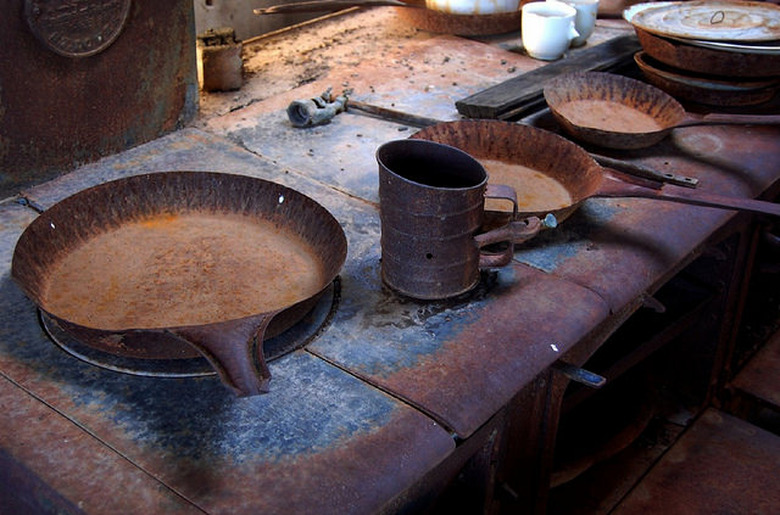How To Clean A Cast Iron Griddle
Nothing says good morning like a sizzling omelet served on a griddle, but if the griddle is cast iron, it's going to need special care when breakfast is over. Like all cast iron kitchen implements, such as frying pans and skillets, a cast iron griddle can rust if you leave it unprotected in your cupboard. To give cast iron implements a protective coating, you should season them prior to use. Improper cleaning can ruin this coating. Keep a few points in mind when cleaning your griddle, and the omelet you cook on it next week will be just as delicious as the one you enjoy today.
Points to Remember
Points to Remember
Standing water is the enemy of all cast iron implements. When exposed to moisture, cast iron quickly rusts, and rusted iron adds a distinctively unpleasant metallic taste to anything you cook.
Cast iron scratches easily, so you should never use anything made of metal to scrape food off it. This includes metal utensils and spatulas as well as steel wool.
Dish detergent will strip the seasoning from a cast iron implement and is also a no-no when cleaning your griddle.
Even a proper cleaning may strip some of the seasoning from your griddle, so it's always a good idea to replenish the protective coating.
Cleaning Procedure
Cleaning Procedure
The best time to clean your griddle is immediately after serving, while it's still hot. If you let the griddle cool, baked-on food ‒ especially anything containing eggs ‒ becomes hard and more difficult to remove.
1. Wash the Griddle
Put the still warm griddle in your sink, run some hot water over it and scrub off as much food as you can, using a nylon kitchen scrubber or a sponge. Protect your hands from the warm metal and hot water by wearing rubber gloves.
2. Scrub Stuck Food
Cover the cooking surface with kosher salt ‒ which is coarser than regular table salt ‒ and add a bit of water to make a paste. Scrub this paste over the stuck-on food to remove it. Rinse off the salt when you've finished.
3. Dry the Griddle
Wipe the griddle dry with a dishcloth or place it on a warm stove to allow the water to evaporate. Let it warm about 5 minutes.
4. Apply a Protective Coating
Wait for the griddle to cool; then, using a paper towel, spread a coating of vegetable oil or shortening over the cooking surface. Remove the excess with a second paper towel; then put the griddle away.
Tip
If you see rust spots on your griddle, you can rub them off by sprinkling them with baking soda and rubbing it down with half of a raw potato. If the rust is excessive, you may need to re-season your griddle after this treatment.
Seasoning Your Griddle
Seasoning Your Griddle
When you buy a new griddle, it's important to season it before you use it. You should repeat this procedure every year or two to keep your griddle in top shape. Before seasoning your griddle, wash it with detergent; then rinse it and dry it thoroughly. Coat the cooking surface with vegetable oil or shortening; then place the griddle upside-down on the top shelf in an oven pre-heated to 350 degrees F. Let it bake for an hour; then turn off the heat and let the griddle cool in the oven. Wipe off excess oil before storing the griddle.
